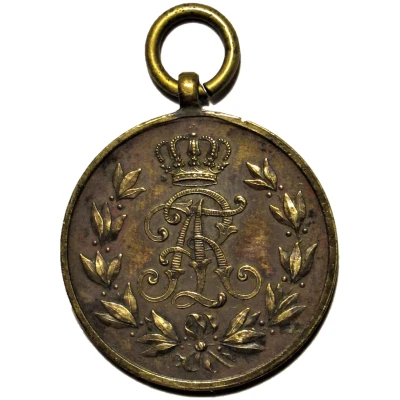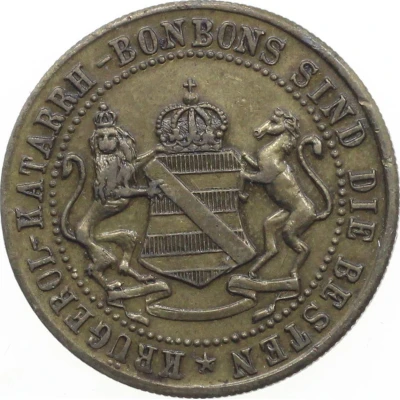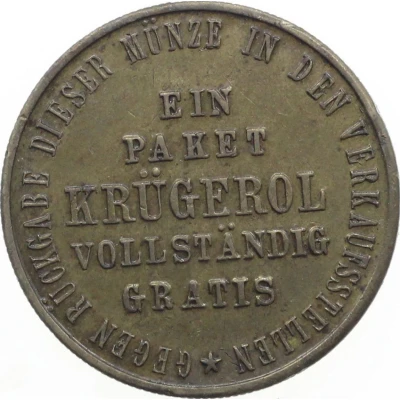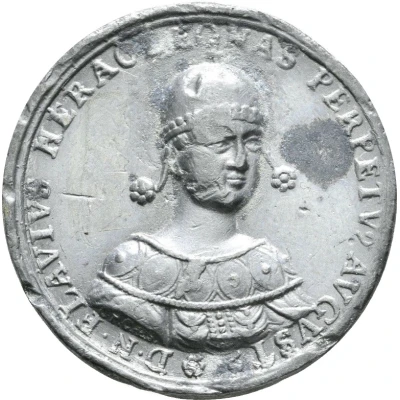
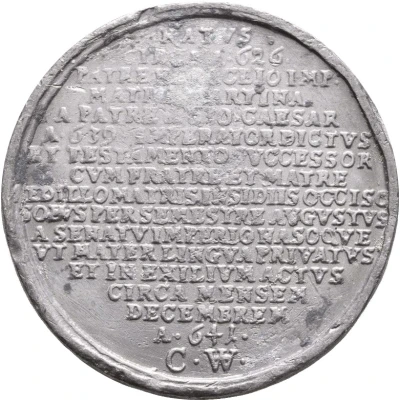

Medal - Heracleonas ND
| Tin | 21.64 g | 32 mm |
| Location | Kingdom of Saxony (Albertinian Line) (German States) |
|---|---|
| Type | Commemorative medals › Personality medals |
| Composition | Tin |
| Weight | 21.64 g |
| Diameter | 32 mm |
| Shape | Round |
| Demonetized | Yes |
| Updated | 2024-11-14 |
| Numista | N#152104 |
|---|---|
| Rarity index | 97% |
Reverse
Inscription on 16 lines followed by designer's initials
Script: Latin
Lettering:
NATVS CIRCA A· 626
PATRE HERACLIO IMP.
MATRE MARTINA
A PATRE A· 630 CAESAR A· 639
IMPERATOR DICTVS ET TESTAMENTO
SVCCESSOR CVM FRATRE ET MATRE
SED ILLO MATRIS INSIDIIS OCCISO
SOLVS PER SEMESTRE AVGVSTVS
A SENATV IMPERIO NASOQVE VT MATER
LINGVA PRIVATVS ET IN EXILIVM ACTVS
CIRCA MENSEM DECEMBREM A· 641
C · W ·
Translation:
Born about year 626, father Heraclius Imperator, Mother Martina. From the father year 630, Caesar year 639. The said Emperor and will, heir with his brother and mother, but their mother murdered in a plot. Lone through months August, from the Imperial Senate [nasoque] as mother, language common and driven into exile about the month of December year 641.
C W = Christian Wermuth
A· = Anno [Year]
Engraver: Christian Wermuth
Edge
Plain
Comment
Constantine Heraclius (Latin: Flavius Constantinus Heraclius (Heraclianus) Augustus; 626–641), commonly known by the diminutive Heraklonas or Herakleonas, was the son of Heraclius and his niece Martina. His father had stipulated in his will that both of his stepsons should rule jointly upon his death. Heraclius also specified that his wife, Martina, was to be called "Mother and Empress" in so far as she might have influence at court as well.The Emperor Heraclius died in February 641 from edema. When Martina did make the late Emperor's will public she faced staunch resistance to her playing any active role in government, but both Heraklonas and Constatine III were proclaimed joint-emperors in February 641 without incidence. After Constantine died of tuberculosis in April/May 641, Heraklonas became sole emperor, under the regency of his mother due to his young age, usually dated from April/May – September/October 641, when he was overthrown by Valentinus, a general and usurper of Armenian extract, who installed Constans II, the son of Constantine III. Valentinus had Heraklonas' nose cut off, then exiled him to Rhodes, where he is believed to have died in the same year.
Christian Wermuth (1661-1739) was a famous German medallist, born in Altenburg (Gera, Thuringia, Germany) and died in Gotha. He was educated in Dresden where he learned die-sinking. In 1689 he was appointed Engraver to the Mint at Gotha and in 1688 Court Medallist to the Ducal House of Saxony. In 1703 Wermuth was appointed Court Medallist to King Frederick I of Prussia. With the help of his pupils, Wermuth issued, over the space of about twenty years, over 1300 medals. Forrer notes that, with few exceptions, his medals are of little artistic merit. They are noteworthy, however, in that many of his medals were satirical in content, some of which were suppressed and consequently of great rarity. Included in this group of satirical medals are a large number of anti-Semitic medals, such as the Korn Judeand Feder Judemedals. Indeed, Christian Wermuth has the unsavory reputation of being the foremost anti-Semitic medallist in history (Friedenberg).
From the 1702 book by C. Wermuthii ... 'Numismata omnium Imperatorum Romanorum mnemonica, ordine descripta et imaginibus accuratis repræsentata, etc'
The last part of the first image is 'mali principii malus exitus' [beginning bad bad outcome]. The second image has the medal on lower left, as number CXLIII (143) but is a completely different design - also shown on there are others in the series. The last portrait in the book is number CCXV (215), with drawings marked 'Jacob Petrus, Sculps.'
